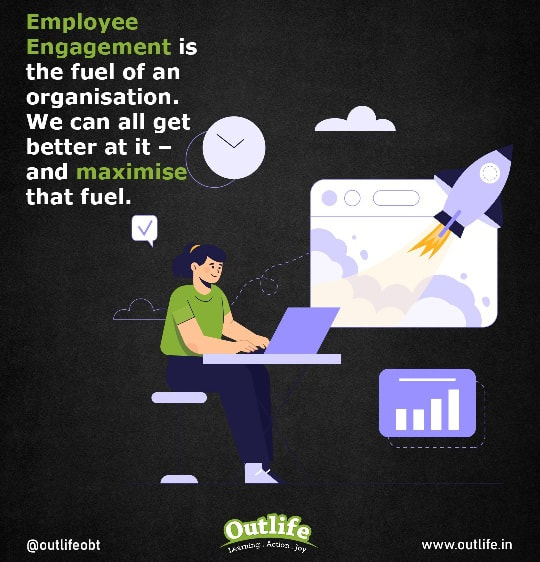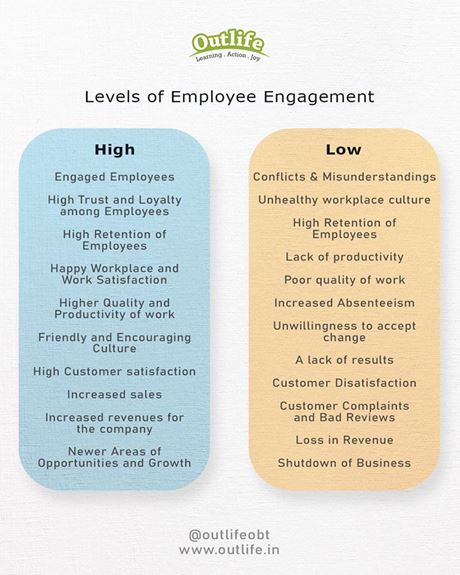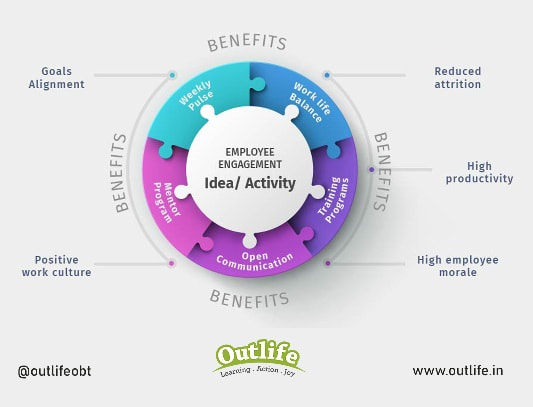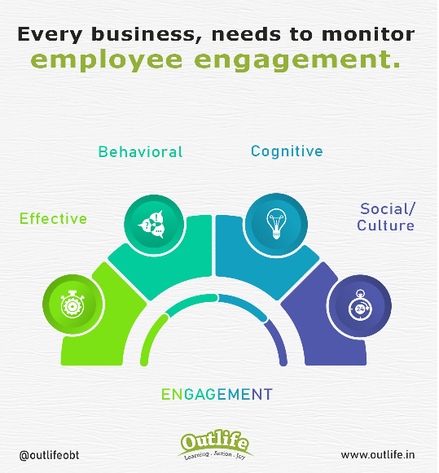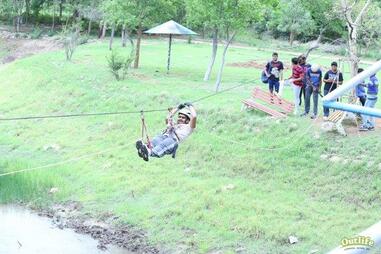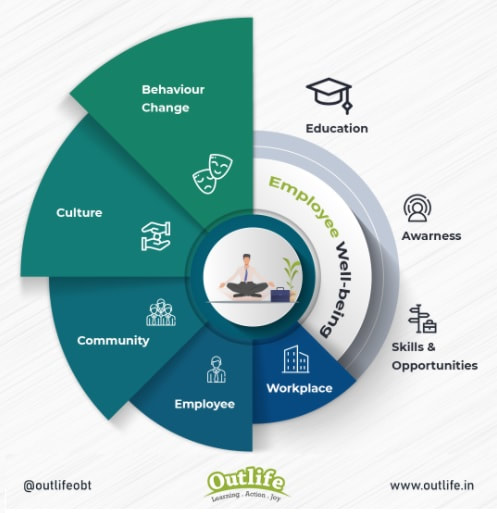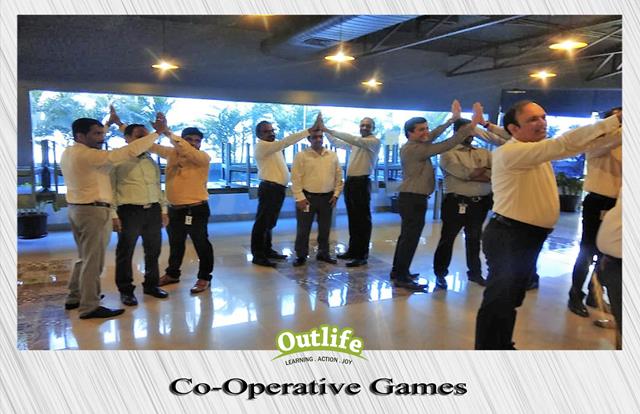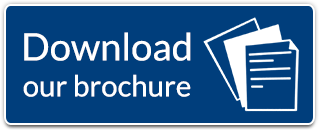Boost Productivity with Top Employee Engagement Activities
Boosting employee morale and productivity is a top priority for every business. After all, engaged employees are more likely to be motivated, innovative, and committed to delivering their best work. But how do you create a work environment that promotes engagement? The answer lies in employee engagement activities.
Employee engagement activities are essential for organizations looking to boost productivity and achieve success. When employees are engaged, they are motivated, committed, and enthusiastic about their work. One effective way to foster engagement is through carefully designed employee engagement activities.
These workplace engagement activities create a positive and inclusive work environment, enhance teamwork, and strengthen the bond between employees and the organization. In this article, we will explore the power of employee engagement activities and how they can significantly impact productivity.
We will discuss various types of fun engagement activities, strategies for implementation, and the benefits they bring to both employees and the organization. Get ready to discover how you can elevate productivity and create a thriving workplace through employee engagement activities.
In this comprehensive guide, we will delve into the world of employee engagement activities. These will cover various areas such as team building, recognition, professional development, and wellness.
Moreover, we will discuss how to tailor these activities to your team, engage remote employees, and implement low-cost or no-cost initiatives.
Whether you are an HR professional, a team leader, or a business owner, this guide will equip you with the knowledge and tools you need to boost productivity with employee engagement activities.
So, are you ready to transform your workplace into a hub of engagement and productivity? Let's get started!
Employee engagement activities are essential for organizations looking to boost productivity and achieve success. When employees are engaged, they are motivated, committed, and enthusiastic about their work. One effective way to foster engagement is through carefully designed employee engagement activities.
These workplace engagement activities create a positive and inclusive work environment, enhance teamwork, and strengthen the bond between employees and the organization. In this article, we will explore the power of employee engagement activities and how they can significantly impact productivity.
We will discuss various types of fun engagement activities, strategies for implementation, and the benefits they bring to both employees and the organization. Get ready to discover how you can elevate productivity and create a thriving workplace through employee engagement activities.
In this comprehensive guide, we will delve into the world of employee engagement activities. These will cover various areas such as team building, recognition, professional development, and wellness.
Moreover, we will discuss how to tailor these activities to your team, engage remote employees, and implement low-cost or no-cost initiatives.
Whether you are an HR professional, a team leader, or a business owner, this guide will equip you with the knowledge and tools you need to boost productivity with employee engagement activities.
So, are you ready to transform your workplace into a hub of engagement and productivity? Let's get started!
The Impact of Engagement on Productivity and Profitability
The link between employee engagement and productivity is well-documented. Engaged employees are more productive because they are more motivated, more focused, and more committed to their work.
Moreover, higher productivity can lead to higher profitability. When employees are more productive, they can produce more goods, provide better services, and generate more revenue for the company.
In fact, companies with high employee engagement levels are more likely to outperform their competitors in terms of profitability.
In conclusion, investing in employee engagement is not just good for employees. It's good for business.
Moreover, higher productivity can lead to higher profitability. When employees are more productive, they can produce more goods, provide better services, and generate more revenue for the company.
In fact, companies with high employee engagement levels are more likely to outperform their competitors in terms of profitability.
In conclusion, investing in employee engagement is not just good for employees. It's good for business.
What are Employee Enagement Activities
Employee engagement activities, including fun employee engagement activities, play a crucial role in creating an environment that encourages and nurtures this high level of commitment. These activities provide opportunities for employees to connect with each other, develop new skills, and feel valued and appreciated by their organization. By investing in employee engagement, businesses can reap the rewards of a motivated and high-performing workforce.
The Importance of employee engagement activities
Employee engagement activities are not just a nice-to-have; they are essential for the long-term success of any organization. Highly Engaged employees are more likely to stay with the company, reducing turnover and the associated costs of hiring and training new employees. They are also more likely to be loyal brand ambassadors, positively impacting the company's reputation and customer satisfaction.
Furthermore, engaged employees are more productive. When employees feel connected to their work and their colleagues, they are more inspired to go above and beyond their job requirements. They are more likely to collaborate, share ideas, and take ownership of their tasks. This level of engagement leads to increased innovation, improved problem-solving, and ultimately, better business outcomes.
Furthermore, engaged employees are more productive. When employees feel connected to their work and their colleagues, they are more inspired to go above and beyond their job requirements. They are more likely to collaborate, share ideas, and take ownership of their tasks. This level of engagement leads to increased innovation, improved problem-solving, and ultimately, better business outcomes.
While there are many ideas and activities to engage employees that can be done both at the office and outside. Outlife, as an employee engagement specialist from India, can help create the desired engagement, motivation, and belonging in your organisation through its innovative and active employee engagement ideas that cater to enhancing employee motivation in your different departments in the organisation.
Planning employee engagement activities with Outlife
Now that you understand the importance and benefits of employee engagement activities, it's time to explore how Outlife can help you plan and implement these activities in your workplace. Outlife offers a comprehensive range of engagement experiences tailored to your organization's specific needs and goals.
By partnering with Outlife, you gain access to a team of experienced professionals who will work closely with you to design and execute engaging activities that align with your company culture and values. From team-building adventures to wellness programs, skill-building workshops, and recognition initiatives, Outlife has the expertise and resources to make your engagement activities a resounding success.
Outlife takes care of all the logistics, ensuring a seamless and stress-free experience for you and your employees. Their team of facilitators and experts will guide your team through each activity, ensuring maximum engagement, learning, and fun. With Outlife, you can rest assured that your employees will have a memorable and impactful experience that will leave a lasting impression.
By partnering with Outlife, you gain access to a team of experienced professionals who will work closely with you to design and execute engaging activities that align with your company culture and values. From team-building adventures to wellness programs, skill-building workshops, and recognition initiatives, Outlife has the expertise and resources to make your engagement activities a resounding success.
Outlife takes care of all the logistics, ensuring a seamless and stress-free experience for you and your employees. Their team of facilitators and experts will guide your team through each activity, ensuring maximum engagement, learning, and fun. With Outlife, you can rest assured that your employees will have a memorable and impactful experience that will leave a lasting impression.
TOP 15 Employee Engagement Activities List
Here is a list of Top 15 activities to engage employees that can meet your HR goals of creating a active and consistent engagement for all employees in the organisation. These engagement activities for employees can contribute towards a fun, productive and engaging work culture
With Outlife, you can take your employee engagement efforts to the next level. Whether it's an outdoor adventure, a creative workshop, or a virtual team-building activity, Outlife offers a wide range of experiences designed to build collaboration, boost morale, and ignite the spark of engagement among your employees.
By incorporating Outlife's employee engagement activities into your workplace culture, you can create an atmosphere that promotes teamwork, communication, and a sense of belonging. These activities not only provide a break from the daily grind but also offer opportunities for personal growth and development. With Outlife, you can inspire your entire team to step outside their comfort zones, build strong relationships, and become more invested in the success of your organization.
Don't miss out on the power of employee engagement activities. Discover how Outlife can transform your workplace and unlock the full potential of your team.
By incorporating Outlife's employee engagement activities into your workplace culture, you can create an atmosphere that promotes teamwork, communication, and a sense of belonging. These activities not only provide a break from the daily grind but also offer opportunities for personal growth and development. With Outlife, you can inspire your entire team to step outside their comfort zones, build strong relationships, and become more invested in the success of your organization.
Don't miss out on the power of employee engagement activities. Discover how Outlife can transform your workplace and unlock the full potential of your team.
1. Master Chef Competition
Running a Master Chef competition can be a highly engaging activity for enhancing employee engagement. This is also where the participants discover each others talents and develop good relationships.
2. Team Outings
Planning corporate team outing isn't just about getting people out of the office; it's about building camaraderie, boosting morale, and creating lasting bonds among colleagues.
In today's competitive and stressful business enviroment, team outings have become an indispensable tool for companies to nurture teamwork, employee satisfaction, rejunavation and relaxation.
From adrenaline pumping outdoor adventures to laidback social gatherings, the art of organizing corporate team outing involves thoughtful planning and creativity.
Fun Team bonding activities refers to events that bring together team members to improve communication and relationships. These activities can be anything from team bonding exercises, recreational activities, or offsite events.
Some Activities that can be part of the team outing are:
In today's competitive and stressful business enviroment, team outings have become an indispensable tool for companies to nurture teamwork, employee satisfaction, rejunavation and relaxation.
From adrenaline pumping outdoor adventures to laidback social gatherings, the art of organizing corporate team outing involves thoughtful planning and creativity.
Fun Team bonding activities refers to events that bring together team members to improve communication and relationships. These activities can be anything from team bonding exercises, recreational activities, or offsite events.
Some Activities that can be part of the team outing are:
- Scavenger or Treasure Hunt
- Quiz Trivia and Puzzles
- Improv Theatre
- Karaoke Night
- Team Stories
- Go-Kart Race
- Office trivia
- Egg drop
- Sticky notes
- Cricket Match
- Room Escape Games
- Egg Drop Challenge
- Paint Ball
- Master Chef Cooking Competition
- Adventure Activities
- Day or Weekend Trekking or Camping Trip
- Camp Fire Night
- Fitness Challenge
- Art Class
- Spider Web
- Ball Toss
- Bull Ring
- Duct Tape Trolley
3. Team Building Activities
Team engagement activities are designed to foster collaboration and strengthen relationships among team members. These activities can range from outdoor adventures such as hiking or camping trips to indoor activities like escape rooms or cooking classes.
Team engagement activity can help employees learn to trust and rely on each other, improving teamwork and communication within the workplace.Team building and corporate outings has been the most impactful ways to motivate the employees and diffuse conflict in teams.
When there is all work and no play, work becomes boring and employees get disconnected. A good Team Outing session can help employees reconnect, bond, listen and see other in a new light.
Organizing team enagement activities is a dynamic way to strengthen team spirit, improve communication, and increase employee engagement. Activities such as laser tag, go-kart racing, and bowling offer exciting opportunities for employees to bond outside the traditional office setting.
For teams that cannot physically be together, virtual team-building games provide a platform for remote teams to connect and engage in collaborative challenges Additionally, exploring local attractions like brewery and winery tours can offer unique experiences that foster team cohesion and create lasting memories
Team Enagement Activities:
For Remote Teams:
Virtual Employee Engagement activities can get remote teams connect with each other and feel a sense of togetherness and belonging.
Virtual Team Building Games
Volunteering
Volunteering as a team-building activity empowers employees to contribute positively to society while also benefiting from improved mental and physical health. This engagement not only helps employees gain valuable skills but also enhances their sense of fulfillment and connection with their colleagues.
Creative and Problem-Solving Games:
Social and Collaborative Activities:
Incorporating these diverse team-building activities into the workplace not only enriches the employee experience but also significantly contributes to building strong connections between team members, thereby increasing trust, communication, and overall engagement. Engaging in activities outside the workplace and programs that foster a sense of belonging at work are essential in boosting morale, enhancing unity, and facilitating collaboration.
Team engagement activity can help employees learn to trust and rely on each other, improving teamwork and communication within the workplace.Team building and corporate outings has been the most impactful ways to motivate the employees and diffuse conflict in teams.
When there is all work and no play, work becomes boring and employees get disconnected. A good Team Outing session can help employees reconnect, bond, listen and see other in a new light.
Organizing team enagement activities is a dynamic way to strengthen team spirit, improve communication, and increase employee engagement. Activities such as laser tag, go-kart racing, and bowling offer exciting opportunities for employees to bond outside the traditional office setting.
For teams that cannot physically be together, virtual team-building games provide a platform for remote teams to connect and engage in collaborative challenges Additionally, exploring local attractions like brewery and winery tours can offer unique experiences that foster team cohesion and create lasting memories
Team Enagement Activities:
- Team Day Adventure Outing
- Laser Tag
- Go-Kart Racing
- Bowling
- Brewery and Winery Tours
- Scavenger Hunt
- Treasure Hunt
- Human Knot
- Spider Web
- Paper Tower
- Board Game
- Pictionary
- Jigsaw Puzzle
- Quick Draw
- Desert Survival
- Moon Ball
- Office Trivia
- Helium Stick
- Balloon Race
- Hula Hoop Circle
- Hula Frenzy
- Blindfold polygon
- Change Wave
- Three Islands
- Personality Test
For Remote Teams:
Virtual Employee Engagement activities can get remote teams connect with each other and feel a sense of togetherness and belonging.
Virtual Team Building Games
Volunteering
Volunteering as a team-building activity empowers employees to contribute positively to society while also benefiting from improved mental and physical health. This engagement not only helps employees gain valuable skills but also enhances their sense of fulfillment and connection with their colleagues.
Creative and Problem-Solving Games:
- Escape Room: Develops problem-solving skills and builds trust .
- Lego Challenge: Encourages creativity and innovation.
- Improv Games: Promotes adaptability and out-of-the-box thinking.
Social and Collaborative Activities:
- Food Truck Festival: Encourages interaction and fosters conversations.
- Virtual Happy Hour: Promotes remote socializing and a sense of community.
- Team Trivia: Educational and entertaining, fostering a culture of learning .
Incorporating these diverse team-building activities into the workplace not only enriches the employee experience but also significantly contributes to building strong connections between team members, thereby increasing trust, communication, and overall engagement. Engaging in activities outside the workplace and programs that foster a sense of belonging at work are essential in boosting morale, enhancing unity, and facilitating collaboration.
4. Adventure Day Team Outing
An adventure day outing for the members in your team could be highly motivational as they get to take part in outdoor challenges and feel the adrenaline rush . In the process they may even discover their own and teams strengths.
A day adventure outing for all your employees will involve spending time on the great outdoors and taking part in adventure sports activities. The adrenaline rush takes care of the motivation and engagement and create memorable experience
A day adventure outing for all your employees will involve spending time on the great outdoors and taking part in adventure sports activities. The adrenaline rush takes care of the motivation and engagement and create memorable experience
5. Games Tournaments
There is noting better that getting Employees involved in games, tournaments, and competitions at the workplace. Such activities do not have to be fancy in any way as employees love connecting with each other through games.
Simple games like chess, ping pong or pool tournament in the office supports popular employee enagement activities. You can also creates company side office-sports league in different games. Simple sports events that can include a 5k or 10k run or a cricket match go a long way in keeping employees loyal and engaged at work.
Learn more on Corporate Sports
Simple games like chess, ping pong or pool tournament in the office supports popular employee enagement activities. You can also creates company side office-sports league in different games. Simple sports events that can include a 5k or 10k run or a cricket match go a long way in keeping employees loyal and engaged at work.
Learn more on Corporate Sports
6. Work Life Balance
Work-life balance initiatives: Offer employees flexibility and support to balance their personal and professional lives, such as flexible work arrangements, telecommuting options, or family-friendly policies. A Workshop can be conducted on work life balance and employees are taught how to balance stress through mindfulness.
Wellness programs: Offer on-site fitness classes, healthy snacks, or subscriptions to wellness apps. Wellness programs can help employees to improve their physical and mental health, which can lead to increased productivity and engagement.
These interventions include Yoga, Taichi and Meditation that are conducted regularly at your premises where experts from different aspects of work life balance will conduct sessions.
Employee assistance programs (EAPs): Provide confidential resources to help employees manage stress, personal issues, or mental health concerns. EAPs can be a valuable resource for employees who are struggling with personal challenges.
Wellness programs: Offer on-site fitness classes, healthy snacks, or subscriptions to wellness apps. Wellness programs can help employees to improve their physical and mental health, which can lead to increased productivity and engagement.
These interventions include Yoga, Taichi and Meditation that are conducted regularly at your premises where experts from different aspects of work life balance will conduct sessions.
Employee assistance programs (EAPs): Provide confidential resources to help employees manage stress, personal issues, or mental health concerns. EAPs can be a valuable resource for employees who are struggling with personal challenges.
7. Health, Wellness & Well Being
Covid-19's Impact made Employers realize the importance of their employees Mental Health & Wellbeing and How it has direct impact of Productivity & Performance.
Health and wellness are basic human needs. Bad News, Dissatisfaction & Stressful at work are two main causes for poor mental health and unorganized workplace well being.
Good News, You just need to know science behind the Employee Wellbeing and Know how to drive meaning insights and take them into action. Our Health and wellness workshops are designed around engaging participants into fitness activities and good food and sleep habits. This is achieved by hosting regular activity and engagement sessions on fitness, diet and overall wellness by reputed doctors, health and wellness professionals.
The focus of the health and wellness sessions are a mix of physical, emotional and mental well being. Employees who are able to manage their well being go a long way in consistent performance and growth.
Wellness programs and activities focus on promoting physical and mental well-being among employees. These can include fitness challenges, yoga classes, mindfulness workshops, or even sponsored gym memberships. By prioritizing employee wellness, organizations show that they value their employees' health and happiness, leading to increased job satisfaction and overall well-being.
In the pursuit of enhancing workplace morale and productivity, innovative health and wellness initiatives have become paramount. Here is a breakdown of some effective strategies:
Physical Well-being Initiatives:
Mental and Emotional Support:
Specialized Health Programs and Work Models:
These initiatives reflect a holistic approach to employee well-being, acknowledging the interconnectedness of physical, mental, and emotional health. By investing in such programs, companies can foster a healthier, more inclusive, and productive workplace environment.
Health and wellness are basic human needs. Bad News, Dissatisfaction & Stressful at work are two main causes for poor mental health and unorganized workplace well being.
Good News, You just need to know science behind the Employee Wellbeing and Know how to drive meaning insights and take them into action. Our Health and wellness workshops are designed around engaging participants into fitness activities and good food and sleep habits. This is achieved by hosting regular activity and engagement sessions on fitness, diet and overall wellness by reputed doctors, health and wellness professionals.
The focus of the health and wellness sessions are a mix of physical, emotional and mental well being. Employees who are able to manage their well being go a long way in consistent performance and growth.
Wellness programs and activities focus on promoting physical and mental well-being among employees. These can include fitness challenges, yoga classes, mindfulness workshops, or even sponsored gym memberships. By prioritizing employee wellness, organizations show that they value their employees' health and happiness, leading to increased job satisfaction and overall well-being.
In the pursuit of enhancing workplace morale and productivity, innovative health and wellness initiatives have become paramount. Here is a breakdown of some effective strategies:
Physical Well-being Initiatives:
- Yoga Classes and Gym Memberships: Offering yoga classes and subsidized or free gym memberships encourages physical activity, helping employees maintain fitness and reduce stress.
- Ergonomic Workstations: Customizing workstations to be ergonomic supports physical health by preventing musculoskeletal disorders, making employees more comfortable and productive.
- Sleep Workshops: Educating employees on the importance of sleep and providing practical advice for better sleep hygiene can significantly improve overall well-being and job performance.
Mental and Emotional Support:
- Mental Health Support Services: Providing access to mental health support through helplines, talking therapies, and app subscriptions ensures employees have the resources they need to navigate personal and professional challenges.
- Designated Suicide First Aiders: Training employees as suicide first aiders equips them with the skills to identify and assist colleagues in crisis, fostering a supportive workplace environment.
- Wellness Programs: Incorporating comprehensive wellness programs that include stress management, emotional intelligence, and resilience training can significantly enhance employees' mental and physical well-being.
- Stress management workshops: Provide workshops on stress management techniques, such as time management, relaxation techniques, and healthy coping mechanisms.
Specialized Health Programs and Work Models:
- Employee Fertility Assistance and Cancer Care Support: Implementing programs that provide fertility assistance and specialized cancer care support demonstrates an organization's commitment to the diverse health needs of its employees, promoting inclusivity and support.
- Four-Day Work Week Trial: Businesses experimenting with a four-day work week have observed happier, less stressed employees who take fewer sick days, suggesting a significant positive impact on overall health and productivity.
- Unlimited Paid Time Off and Private Health Coverage: Offering unlimited paid time off and private health insurance not only gives employees the autonomy to manage their well-being but also provides peace of mind regarding healthcare access, further supporting mental well-being .
These initiatives reflect a holistic approach to employee well-being, acknowledging the interconnectedness of physical, mental, and emotional health. By investing in such programs, companies can foster a healthier, more inclusive, and productive workplace environment.
8. Cooperative Play | Icebreaker Activities
Nothing beats a play and fun games when its together. cooperative play are short duration sessions that are designed around play and having fun. These sessions bring Fun, Laughter and brings the participants together and enhances team bonding.
Cooperative Play is a type of play where teams engage in activities together, working collaboratively towards a common goal or shared outcome. Here participants interact with each other in a positive and supportive manner, sharing ideas, resources, and responsibilities. The focus is on teamwork and social interaction rather than competition.
Cooperative Play is a type of play where teams engage in activities together, working collaboratively towards a common goal or shared outcome. Here participants interact with each other in a positive and supportive manner, sharing ideas, resources, and responsibilities. The focus is on teamwork and social interaction rather than competition.
9. Sports and Fitness
Sports and Fitness includes gamified mini sports sessions of cricket, football, hockey and marital arts for improving fitness and engagement. These can also include intra and inter company leagues that employees can regularly participate in year on year.
Theme based engagements include celebrating various international and national days dedicated to womens day, environment day, yoga day, earth day etc. These sessions can be conducted on the premises or virtually online
For more ideas of team spots check out Corporate Sports
- Team sports: Organize leagues or tournaments for sports such as basketball, volleyball, soccer, or softball.
- Individual fitness challenges: Host challenges for employees to track their steps, complete a certain number of workouts, or reach a fitness goal
- Group fitness classes: Offer group fitness classes such as yoga, Pilates, or HIIT workouts.
- Discounted gym memberships: Partner with a local gym to offer discounted memberships to employees.
- On-site fitness facilities: If you have the space, consider creating an on-site fitness center for employees to use before, during, or after work.
- Walking or running groups: Organize walking or running groups for employees who want to get some exercise outdoors.
For more ideas of team spots check out Corporate Sports
10. Hobby Clubs
Hobby Clubs include walking, Adventure, Nature, Bird Watching that employees are encouraged to participate. We facilitate formation of various activity and hobby clubs ad support the inhouse club leadership team to engage employees through various supported activities that can be done inhouse and outdoors.
Creative Clubs:
Social Clubs:
Creative Clubs:
- Arts and crafts club: This club could focus on activities like painting, drawing, sculpting, knitting, or jewelry making.
- Writing club: This club could provide a space for employees to share their writing, participate in writing prompts, or work on creative projects.
- Photography club: This club could be for employees who enjoy taking photos and want to learn more about photography or share their work.
- Cooking club: This club could host cooking demonstrations, potlucks, or challenges around specific cuisines.
- Book club: This club could choose books to read and discuss together, or have different genres represented with smaller reading groups.
Social Clubs:
- Board game club: This club could provide a space for employees to play board games during their lunch break or after work.
- Movie club: This club could choose movies to watch and discuss together, or have different genres represented with smaller viewing groups.
- Trivia night club: This club could host regular trivia nights with different themes or categories.
- Social outings club: This club could organize outings to sporting events, concerts, museums, or other local attractions.
- Hiking or biking club: This club could organize group hikes or bike rides for employees of different skill levels.
- Running or walking club: This club could organize group runs or walks for employees who want to get some exercise outdoors.
- Yoga or fitness club: This club could offer group yoga or fitness classes for employees who want to improve their physical and mental well-being.
- Music club: This club could be for employees who enjoy playing music or simply listening to different genres.
- Foreign language club: This club could provide a space for employees to learn or practice a new language.
13. CSR & Charity Work
Promote the organization's commitment to social responsibility through initiatives such as sustainability programs, charitable donations, or community service projects. CSR and Charity workshops include visiting orphanages or taking part in work for underprivileged community or schools. We are tied up with many NGO's that are seeking such engagement and support. we facilitate the entire engagement and support the CSR initiatives of the company, including giving back to the local community.
Volunteering Activities:
Donation and Fundraising Activities:
Volunteering Activities:
- Volunteer Days: Organize company-wide volunteer days where employees can work together on a specific project for a local charity. This is a great way for team building and allows employees to give back to the community together.
- Skilled-based Volunteering: Employees volunteer their professional skills to assist non-profit organizations. This can be a great way for employees to use their talents for a good cause and can also benefit the charity by providing them with much-needed professional expertise.
Donation and Fundraising Activities:
- Matching Donations: Companies match employee donations to charitable organizations, doubling the impact of their contributions. This is a great way to incentivize employees to donate to causes they care about.
- Payroll Deductions: Allow employees to make charitable donations directly from their paychecks. This is a convenient way for employees to support their favorite charities on a recurring basis.
- Company-Sponsored Charity Events: Organize charity events such as bake sales, car washes, or charity races. The proceeds from these events can be donated to a local charity.
- Sustainability Initiatives: Implement sustainability initiatives in the workplace, such as recycling programs, energy-efficient lighting, and green cleaning products. This can help employees feel good about working for a company that is committed to environmental responsibility.
- Workplace Giving Campaigns: Organize workplace giving campaigns throughout the year to support different charities. This is a great way to raise awareness of different social issues and give employees a chance to support causes they care about.
14. Social and Community Activities
Building a strong sense of community and enhancing employee engagement can be achieved through a variety of social and community activities. These initiatives not only strengthen bonds among employees but also extend the positive impact to their families and the broader community.
These activities underscore the importance of a holistic approach to employee engagement, where social interaction and community impact are interwoven into the fabric of the organizational culture. By implementing such initiatives, companies can create a vibrant, inclusive, and engaging workplace that not only attracts but also retains top talent.
- Host social events, such as happy hours or holiday parties, to help employees relax and have fun with their colleagues. Social events are a great way to celebrate accomplishments, build relationships, and create a more positive work environment. Here are some ideas:
- Company picnic
- Holiday party
- Company outing to a sporting event or concert
- Company picnic
- Community service activities: Organize community service activities to give back to the local community and help employees feel like they are making a positive difference. Here are some ideas:
- Beach clean-up
- Soup kitchen or food bank volunteering
- Park clean-up
- Animal shelter volunteering
- Building or renovating homes for Habitat for Humanity
- Beach clean-up
These activities underscore the importance of a holistic approach to employee engagement, where social interaction and community impact are interwoven into the fabric of the organizational culture. By implementing such initiatives, companies can create a vibrant, inclusive, and engaging workplace that not only attracts but also retains top talent.
15. Celebrate Work and Personal Milestones
Celebrating work and personal milestones plays a crucial role in enhancing employee engagement and fostering a positive work environment. Here's how organizations can effectively celebrate these milestones:
Special Days and Life Events:
Employee Milestones:
Best Practices for Memorable Celebrations:
Special Days and Life Events:
- Special Days: Celebrate unique days like Bring Your Dog to Work Day, Bring Your Child to Work Day, Pajama Day, or No Uniform Day to add fun and break the monotony of the regular work routine.
- Life Events: Acknowledge important personal milestones of employees, including birthdays, weddings, births, and other significant life events, to show that the organization cares about them beyond their professional contributions.
Employee Milestones:
- Professional Achievements: Recognize tenure milestones, completion of major projects, promotions, industry recognition, or obtaining professional certifications. This not only appreciates the employee's hard work and dedication but also motivates others to strive for excellence.
- Celebration Tips: Organize a celebration party, make a public announcement, present personalized trophies or awards, offer special outings or experiences, provide meaningful gifts, involve the whole team, and incorporate surprise elements to make the celebration memorable.
Best Practices for Memorable Celebrations:
- Personalization and Involvement: Plan in advance, personalize the celebration to the individual's preferences, involve colleagues and peers, and consider timing and logistics for maximum impact.
- Creating a Festive Atmosphere: Aim to create a festive atmosphere, incorporate meaningful elements that resonate with the employee, capture and share memories, and foster a positive and supportive environment. Surprising elements can add an extra layer of excitement to the celebrations.
Innovative employee engagement activities
As we navigate the evolving workplace of 2024, it's clear that innovative employee engagement activities play a pivotal role in boosting morale, fostering inclusivity, and driving organizational growth. Whether it’s through celebrating milestones, engaging in team-building activities, leveraging professional development opportunities, or embracing flexible work setups, these strategies collectively aim to create a vibrant and supportive work environment.
They not only enhance the well-being and satisfaction of employees but also significantly contribute to the overall success and competitiveness of organizations in the dynamic corporate landscape.
The importance of continuous improvement and adaptation in engagement practices cannot be overemphasized. As businesses strive to meet the changing needs and aspirations of their workforce, incorporating holistic health initiatives, innovative communication channels, and building an inclusive culture remains crucial
They not only enhance the well-being and satisfaction of employees but also significantly contribute to the overall success and competitiveness of organizations in the dynamic corporate landscape.
The importance of continuous improvement and adaptation in engagement practices cannot be overemphasized. As businesses strive to meet the changing needs and aspirations of their workforce, incorporating holistic health initiatives, innovative communication channels, and building an inclusive culture remains crucial
11 Important questions to consider before planning employee engagement activities?
1. What are the goals of the employee engagement activities for employees? What do you hope to achieve with these activities?
Employee engagement activities aim to improve employee morale, job satisfaction, productivity, employee retention, and overall performance. These activities aim to create a positive workplace culture, build strong employee relationships, and enhance their sense of belonging and commitment to the organization. Other considerations can be to think of hybrid working enviroment and what engagement level do remote workers need.
2. How to align engagement activities with the organization's goals, values, and culture?
To ensure that employee engagement activities align with the organization's goals, values, and culture, it's important to clearly understand these. Organizations should involve their employees in defining the company's mission, vision, and values and use these to guide developing engagement activities.
For example, if an organization values creativity and innovation, it may plan activities that foster creativity and encourage employees to think outside the box. Alternatively, if an organization values community service, it may organize volunteer events that allow employees to give back to the community.
3. How to involve employees in the planning and decision-making process?
Involving employees in the planning and decision-making process can increase their engagement and motivation and provide valuable insights into what activities would be most effective. Organizations can create employee engagement committees or employee engagement survey to gather feedback and activity suggestions.
Another approach is to use a bottom-up approach, where employees can plan and execute their engagement activities. This can empower employees and create a sense of ownership and responsibility.
4. Who is your target audience? Are you planning activities for all employees or specific groups of employees?
The target audience for employee engagement activities can vary depending on the organization's structure and goals. Some activities may be designed for all employees, while others may be tailored for specific departments, teams, or groups.
5. What are the interests and preferences of your employees? What type of activities would they enjoy and find engaging?
It's essential to consider the interests and preferences of employees when planning engagement activities. The variety of activities employees find engaging and enjoyable can vary depending on their demographics, interests, and personalities. Conducting employee engagement survey or focus groups to gather employee feedback can help identify the specific topics and activities they would like to participate in.
6. How frequently should you plan employee engagement activities? Is there a specific timeline or schedule that works best for your organization?
The frequency of employee engagement activities can also vary depending on the organization's goals and resources. Some organizations plan activities monthly, while others plan them quarterly or annually. The timeline or schedule that works best for the organization will depend on factors such as employee availability and workload.
7. How will you measure the success of the employee engagement activities? What metrics will you use to determine whether the activities are achieving their intended goals?
Measuring employee engagement activities' success can be measured through various metrics, such as employee satisfaction surveys, employee turnover rates, productivity metrics, and employee feedback. Setting clear goals and objectives for each activity and measuring progress against them is essential.
8. How will you communicate the employee engagement activities to your employees? How will you ensure they are aware of and excited about the upcoming activities?
Communication is essential when planning employee engagement activities. Effective communication can create excitement and anticipation among employees, increasing participation and engagement. Communication channels can include email, company newsletters, intranet, or social media platforms.
9. How will you involve employees in the planning and implementation of the activities? Will you create a committee or other group to help plan and execute the activities?
Involving employees in the planning and implementing activities can create a sense of ownership and buy-in, leading to increased engagement and participation. Creating a committee or other group to help plan and execute the activities fosters teamwork and collaboration.
10. What is the budget for employee engagement activities? How will you allocate resources to ensure that the activities are successful?
Budget allocation for employee engagement activities will depend on the organization's resources and priorities. Organizations should allocate enough resources to plan and execute activities effectively.
11. How will you follow up after the employee engagement activities are complete? Will you conduct surveys or other feedback mechanisms to gather insights and learnings for future activities?
Following up after the employee engagement activities are complete is essential to measure their success and gather feedback for future activities. Conducting surveys or other feedback mechanisms can help gather insights and learnings for future activities, making them more effective in achieving their intended goals.
Employee engagement activities aim to improve employee morale, job satisfaction, productivity, employee retention, and overall performance. These activities aim to create a positive workplace culture, build strong employee relationships, and enhance their sense of belonging and commitment to the organization. Other considerations can be to think of hybrid working enviroment and what engagement level do remote workers need.
2. How to align engagement activities with the organization's goals, values, and culture?
To ensure that employee engagement activities align with the organization's goals, values, and culture, it's important to clearly understand these. Organizations should involve their employees in defining the company's mission, vision, and values and use these to guide developing engagement activities.
For example, if an organization values creativity and innovation, it may plan activities that foster creativity and encourage employees to think outside the box. Alternatively, if an organization values community service, it may organize volunteer events that allow employees to give back to the community.
3. How to involve employees in the planning and decision-making process?
Involving employees in the planning and decision-making process can increase their engagement and motivation and provide valuable insights into what activities would be most effective. Organizations can create employee engagement committees or employee engagement survey to gather feedback and activity suggestions.
Another approach is to use a bottom-up approach, where employees can plan and execute their engagement activities. This can empower employees and create a sense of ownership and responsibility.
4. Who is your target audience? Are you planning activities for all employees or specific groups of employees?
The target audience for employee engagement activities can vary depending on the organization's structure and goals. Some activities may be designed for all employees, while others may be tailored for specific departments, teams, or groups.
5. What are the interests and preferences of your employees? What type of activities would they enjoy and find engaging?
It's essential to consider the interests and preferences of employees when planning engagement activities. The variety of activities employees find engaging and enjoyable can vary depending on their demographics, interests, and personalities. Conducting employee engagement survey or focus groups to gather employee feedback can help identify the specific topics and activities they would like to participate in.
6. How frequently should you plan employee engagement activities? Is there a specific timeline or schedule that works best for your organization?
The frequency of employee engagement activities can also vary depending on the organization's goals and resources. Some organizations plan activities monthly, while others plan them quarterly or annually. The timeline or schedule that works best for the organization will depend on factors such as employee availability and workload.
7. How will you measure the success of the employee engagement activities? What metrics will you use to determine whether the activities are achieving their intended goals?
Measuring employee engagement activities' success can be measured through various metrics, such as employee satisfaction surveys, employee turnover rates, productivity metrics, and employee feedback. Setting clear goals and objectives for each activity and measuring progress against them is essential.
8. How will you communicate the employee engagement activities to your employees? How will you ensure they are aware of and excited about the upcoming activities?
Communication is essential when planning employee engagement activities. Effective communication can create excitement and anticipation among employees, increasing participation and engagement. Communication channels can include email, company newsletters, intranet, or social media platforms.
9. How will you involve employees in the planning and implementation of the activities? Will you create a committee or other group to help plan and execute the activities?
Involving employees in the planning and implementing activities can create a sense of ownership and buy-in, leading to increased engagement and participation. Creating a committee or other group to help plan and execute the activities fosters teamwork and collaboration.
10. What is the budget for employee engagement activities? How will you allocate resources to ensure that the activities are successful?
Budget allocation for employee engagement activities will depend on the organization's resources and priorities. Organizations should allocate enough resources to plan and execute activities effectively.
11. How will you follow up after the employee engagement activities are complete? Will you conduct surveys or other feedback mechanisms to gather insights and learnings for future activities?
Following up after the employee engagement activities are complete is essential to measure their success and gather feedback for future activities. Conducting surveys or other feedback mechanisms can help gather insights and learnings for future activities, making them more effective in achieving their intended goals.
FAQ on Employee Engagement Activities
1. What are employee engagement activities?
Employee engagement activities are initiatives designed to foster a positive and fulfilling work environment by involving employees in various activities that enhance their job satisfaction, motivation, and overall well-being.
2. Why are employee engagement activities important?
Employee engagement activities are important because they contribute to higher levels of job satisfaction, increased productivity, improved employee morale, reduced turnover rates, and better overall organizational performance.
3. What are some examples of employee engagement activities?
Examples of employee engagement activities include team-building exercises, wellness programs, company-sponsored social events, recognition programs, skill development workshops, volunteering opportunities, and employee feedback sessions.
4. How can I measure the effectiveness of employee engagement activities?
You can measure the effectiveness of employee engagement activities through various methods, including employee surveys, feedback forms, performance metrics, attendance rates, turnover rates, and overall employee morale.
5. What are some low-cost employee engagement activities?
Low-cost employee engagement activities include lunchtime seminars, peer recognition programs, themed dress-up days, coffee breaks with management, team sports competitions, and skill-sharing sessions among employees.
6. How often should employee engagement activities be conducted?
The frequency of employee engagement activities depends on the size of the organization, its culture, and the resources available. However, it's generally recommended to have a mix of ongoing activities, such as weekly or monthly events, and occasional larger events throughout the year.
7. How can I get employees involved in planning employee engagement activities?
You can encourage employee involvement in planning by creating committees or task forces comprised of representatives from different departments or teams. Additionally, soliciting feedback through surveys or suggestion boxes can help generate ideas and gauge interest.
8. What should I do if some employees are not participating in engagement activities?
If some employees are not participating, it's important to understand the reasons behind their disengagement. Consider conducting anonymous surveys to gather feedback and identify any barriers to participation. Additionally, try to offer a variety of activities to appeal to different interests and preferences.
9. Can remote employees participate in employee engagement activities?
Yes, remote employees can participate in employee engagement activities through virtual events, online forums, video conferencing, and collaboration tools. It's essential to ensure that remote employees feel included and connected to the rest of the team.
10. How can I make employee engagement activities more meaningful and impactful?
To make employee engagement activities more meaningful, ensure that they align with the organization's values and goals. Solicit feedback from employees to understand their preferences and interests, and regularly evaluate the effectiveness of activities to make necessary adjustments. Additionally, foster a culture of appreciation and recognition to reinforce the value of employee engagement efforts.
11. What are some effective employee engagement activities?
Here are a variety of effective activities to consider:
12. How can I choose the right activities for my team?
Consider these factors when selecting activities:
13. How often should we organize employee engagement activities?
Consistency is key!
14. How can we measure the success of our employee engagement activities?
Here are some ways to gauge the effectiveness of your activities:
15. What are different Types of Employee Engagement Activities:
16. Which employee engagement activities or initiatives are anticipated for the future?
Looking ahead, impactful employee engagement initiatives may include:
17. What are some fun ways to engage employees?
Engaging employees is essential for creating a positive and productive work environment. Here are some fun ways to engage employees:
1. Team-building activities: Organize team-building exercises or outings that promote collaboration, communication, and problem-solving skills. This could include escape rooms, outdoor adventures, or friendly competitions.
2. Employee recognition programs: Implement a rewards system that acknowledges and rewards employees for their hard work and achievements. This could be through employee of the month programs, peer-to-peer recognition, or small tokens of appreciation.
3. Wellness initiatives: Encourage employee well-being by offering wellness programs such as yoga classes, mindfulness sessions, or fitness challenges.
4. Social events: Organize regular social events like happy hours, team lunches, or themed parties to foster relationships and create a sense of community among employees.
5. Learning opportunities: Provide opportunities for professional development and learning through workshops, seminars, or online courses that align with employees' interests and career goals.
Employee engagement activities are initiatives designed to foster a positive and fulfilling work environment by involving employees in various activities that enhance their job satisfaction, motivation, and overall well-being.
2. Why are employee engagement activities important?
Employee engagement activities are important because they contribute to higher levels of job satisfaction, increased productivity, improved employee morale, reduced turnover rates, and better overall organizational performance.
3. What are some examples of employee engagement activities?
Examples of employee engagement activities include team-building exercises, wellness programs, company-sponsored social events, recognition programs, skill development workshops, volunteering opportunities, and employee feedback sessions.
4. How can I measure the effectiveness of employee engagement activities?
You can measure the effectiveness of employee engagement activities through various methods, including employee surveys, feedback forms, performance metrics, attendance rates, turnover rates, and overall employee morale.
5. What are some low-cost employee engagement activities?
Low-cost employee engagement activities include lunchtime seminars, peer recognition programs, themed dress-up days, coffee breaks with management, team sports competitions, and skill-sharing sessions among employees.
6. How often should employee engagement activities be conducted?
The frequency of employee engagement activities depends on the size of the organization, its culture, and the resources available. However, it's generally recommended to have a mix of ongoing activities, such as weekly or monthly events, and occasional larger events throughout the year.
7. How can I get employees involved in planning employee engagement activities?
You can encourage employee involvement in planning by creating committees or task forces comprised of representatives from different departments or teams. Additionally, soliciting feedback through surveys or suggestion boxes can help generate ideas and gauge interest.
8. What should I do if some employees are not participating in engagement activities?
If some employees are not participating, it's important to understand the reasons behind their disengagement. Consider conducting anonymous surveys to gather feedback and identify any barriers to participation. Additionally, try to offer a variety of activities to appeal to different interests and preferences.
9. Can remote employees participate in employee engagement activities?
Yes, remote employees can participate in employee engagement activities through virtual events, online forums, video conferencing, and collaboration tools. It's essential to ensure that remote employees feel included and connected to the rest of the team.
10. How can I make employee engagement activities more meaningful and impactful?
To make employee engagement activities more meaningful, ensure that they align with the organization's values and goals. Solicit feedback from employees to understand their preferences and interests, and regularly evaluate the effectiveness of activities to make necessary adjustments. Additionally, foster a culture of appreciation and recognition to reinforce the value of employee engagement efforts.
11. What are some effective employee engagement activities?
Here are a variety of effective activities to consider:
- Team-building exercises: Collaborative activities that encourage communication, problem-solving, and trust among colleagues.
- Skill-sharing sessions: Employees can share their expertise with others on a topic they're passionate about, fostering knowledge exchange and professional development.
- Regular one-on-one check-ins: Schedule regular meetings between managers and employees to discuss goals, progress, and well-being. This personalized approach strengthens relationships and addresses concerns early on.
- Volunteer opportunities: Giving back to the community can boost morale, purpose, and team spirit.
- Social events: Host casual gatherings outside of work hours, like game nights, picnics, or sporting events, to allow employees to connect on a more personal level.
- Wellness programs: Offer programs that promote physical and mental health, such as gym memberships, healthy food options, or stress-reduction workshops.
- Recognition and rewards: Acknowledge and celebrate employee achievements, big or small, to show appreciation and motivate continued effort.
12. How can I choose the right activities for my team?
Consider these factors when selecting activities:
- Team size and interests: Tailor activities to your team's dynamics and preferences. What would be enjoyable and engaging for a small group might not work for a large department.
- Budget: Activities can range from free (potlucks) to more expensive (team retreats). Choose options that fit your budget constraints.
- Available time: Consider the time commitment required for each activity. Opt for shorter activities during work hours or longer ones for dedicated team-building sessions.
- Overall goals: Align your activities with your desired outcomes. Do you want to improve communication, boost creativity, or simply have fun?
13. How often should we organize employee engagement activities?
Consistency is key!
- Regularly schedule activities throughout the year to maintain momentum and keep engagement levels high.
- You can mix things up with a combination of small, frequent activities and larger, less frequent events.
14. How can we measure the success of our employee engagement activities?
Here are some ways to gauge the effectiveness of your activities:
- Employee feedback: Conduct surveys or hold focus groups to gather employee input on their experience with the activities.
- Engagement metrics: Track metrics like absenteeism, turnover rates, and productivity to see if they improve after implementing activities.
- Employee participation: High participation rates in activities often indicate positive reception from your team.
15. What are different Types of Employee Engagement Activities:
- Wellness activities: activities that promote physical, mental, and emotional health, such as fitness classes, mindfulness workshops, or wellness challenges.
- Learning and development activities: activities that provide employees with opportunities to learn new skills or gain knowledge, such as training sessions or mentorship programs.
- Team-building activities: activities that promote teamwork, collaboration, and communication, such as team-building exercises or off-site retreats.
- Social activities: activities that provide opportunities for employees to socialize and build relationships, such as company picnics or happy hours.
- Community engagement activities: activities that allow employees to give back to their community, such as volunteering or charitable initiatives.
16. Which employee engagement activities or initiatives are anticipated for the future?
Looking ahead, impactful employee engagement initiatives may include:
- Acknowledgment of exceptional work.
- Enhancements to the onboarding experience.
- Development of clear career progression plans.
- Organization of company-wide retreats or events.
- Conducting “stay interviews” to understand employees' desires to remain with the company.
- Establishing virtual watercooler chats for informal interactions.
- Creation of employee resource groups for support and community.
17. What are some fun ways to engage employees?
Engaging employees is essential for creating a positive and productive work environment. Here are some fun ways to engage employees:
1. Team-building activities: Organize team-building exercises or outings that promote collaboration, communication, and problem-solving skills. This could include escape rooms, outdoor adventures, or friendly competitions.
2. Employee recognition programs: Implement a rewards system that acknowledges and rewards employees for their hard work and achievements. This could be through employee of the month programs, peer-to-peer recognition, or small tokens of appreciation.
3. Wellness initiatives: Encourage employee well-being by offering wellness programs such as yoga classes, mindfulness sessions, or fitness challenges.
4. Social events: Organize regular social events like happy hours, team lunches, or themed parties to foster relationships and create a sense of community among employees.
5. Learning opportunities: Provide opportunities for professional development and learning through workshops, seminars, or online courses that align with employees' interests and career goals.
Learn more on Employee Engagement
To explore tailor-made employee engagement solutions that align with your company's unique needs and goals, feel free to reach out by emailing us at [email protected] or call us on 7729988783 | 7729988781. Ultimately, nurturing a culture that values and actively engages every employee paves the way for heightened motivation, productivity, and innovation, securing a thriving future for organizations worldwide.
We conduct employee enagement activities in Hyderabad, Bangalore, Chennai, Pune, Mumbai, Delhi and Kolkata

